Submitted by WA Contents
Chicago Architecture Biennial announces full list of contributors and project details
United States Architecture News - Aug 27, 2021 - 13:05 3760 views
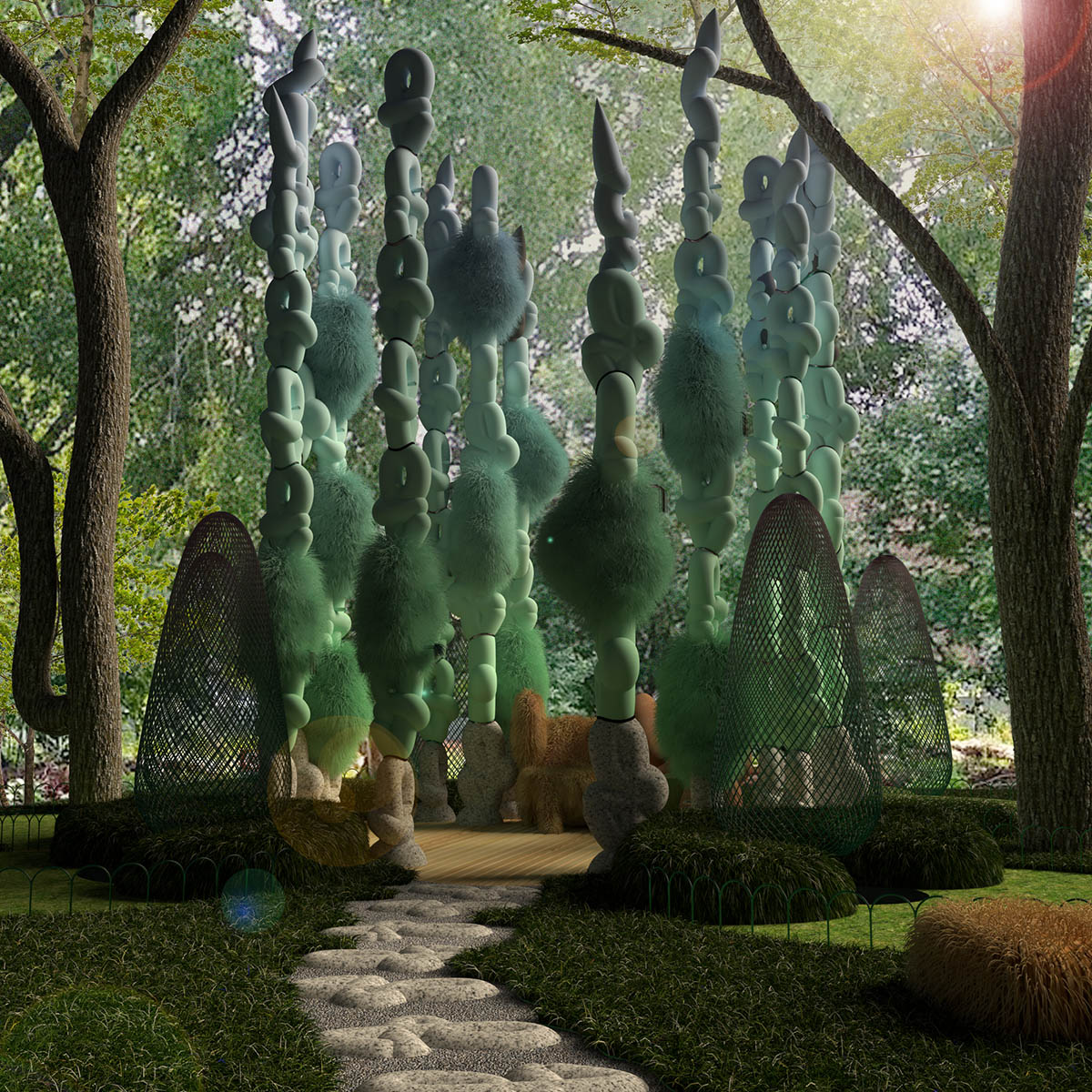
The Chicago Architecture Biennial (CAB) has announced the full list of contributors, program and project details ahead of its opening on September 17, 2021.
This year's Biennial, themed as The Available City, curated by designer, researcher, and educator David Brown, will respond to an urban design framework that proposes connecting community residents, architects, and designers to develop and create spaces that reflect the needs of communities and neighborhoods.
The fourth edition of Chicago Architecture Biennial welcomes 80 contributors from more than 18 countries and will exhibit their works within this framework through site-specific architectural projects, exhibitions, and programs across eight neighborhoods in Chicago and in the digital sphere.
2020 Serpentine Pavilion designer Sumayya Vally, Nigerian architect Mariam Kamara, Founder of SHAU Florian Heinzelmann, Shawhin Roudbari, Studio Barnes with Shawhin Roudbari and MAS Context, Atelier Bow-Wow co-founder Yoshiharu Tsukamoto are among the Biennial's contributors in the fourth edition.
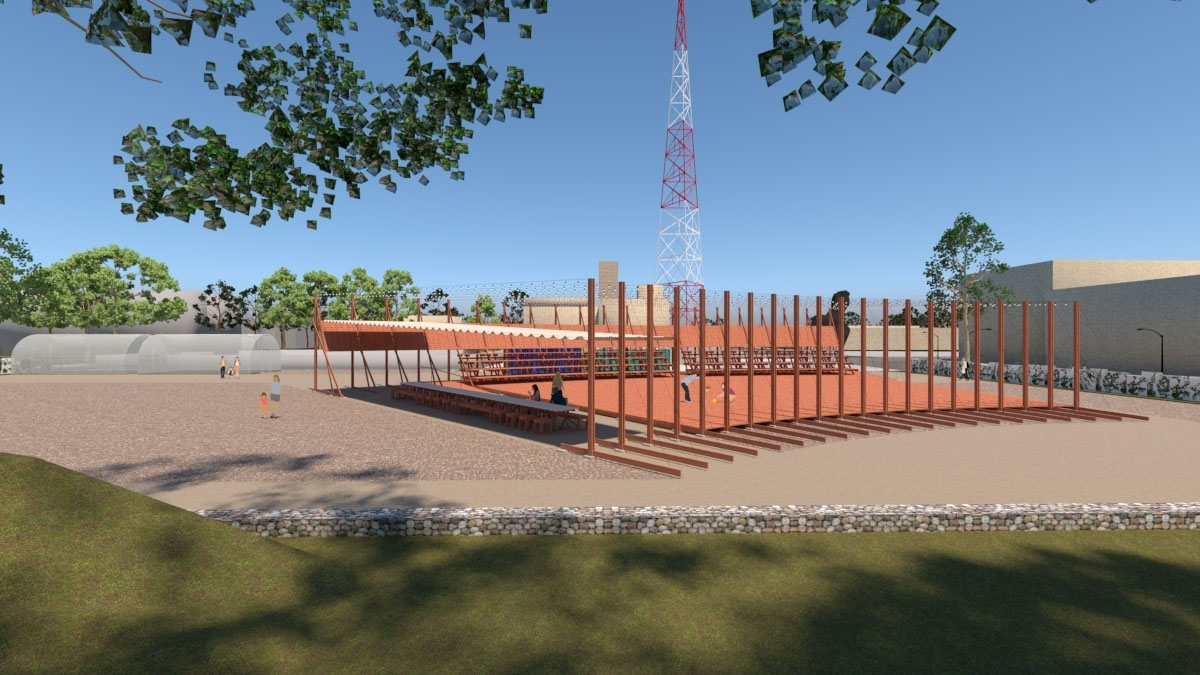
Proposal by Atelier Bow-Wow. Image courtesy of Atelier Bow-Wow
Based on a unique curatorial focus this year, The Available City will "present the city as a site for urban experimentation", providing a location for multifaceted conversations about creating spaces to accommodate and inspire new ways of living, working, and relating to one another.
The Available City will present projects and programs that ask and respond to the question of who gets to participate in the design of the city by exploring new perspectives and approaches to policies.
Aiming to illuminate the potential for immediate new possibilities, the Biennial highlights improvisational organizers of the city, and underscores the exponential impact of small elements in aggregate.
The Biennial is free and open to the public beginning on Friday, September 17. It will be on view at sites and in locations throughout the city, activated through in-person and online programming through December 18, 2021.
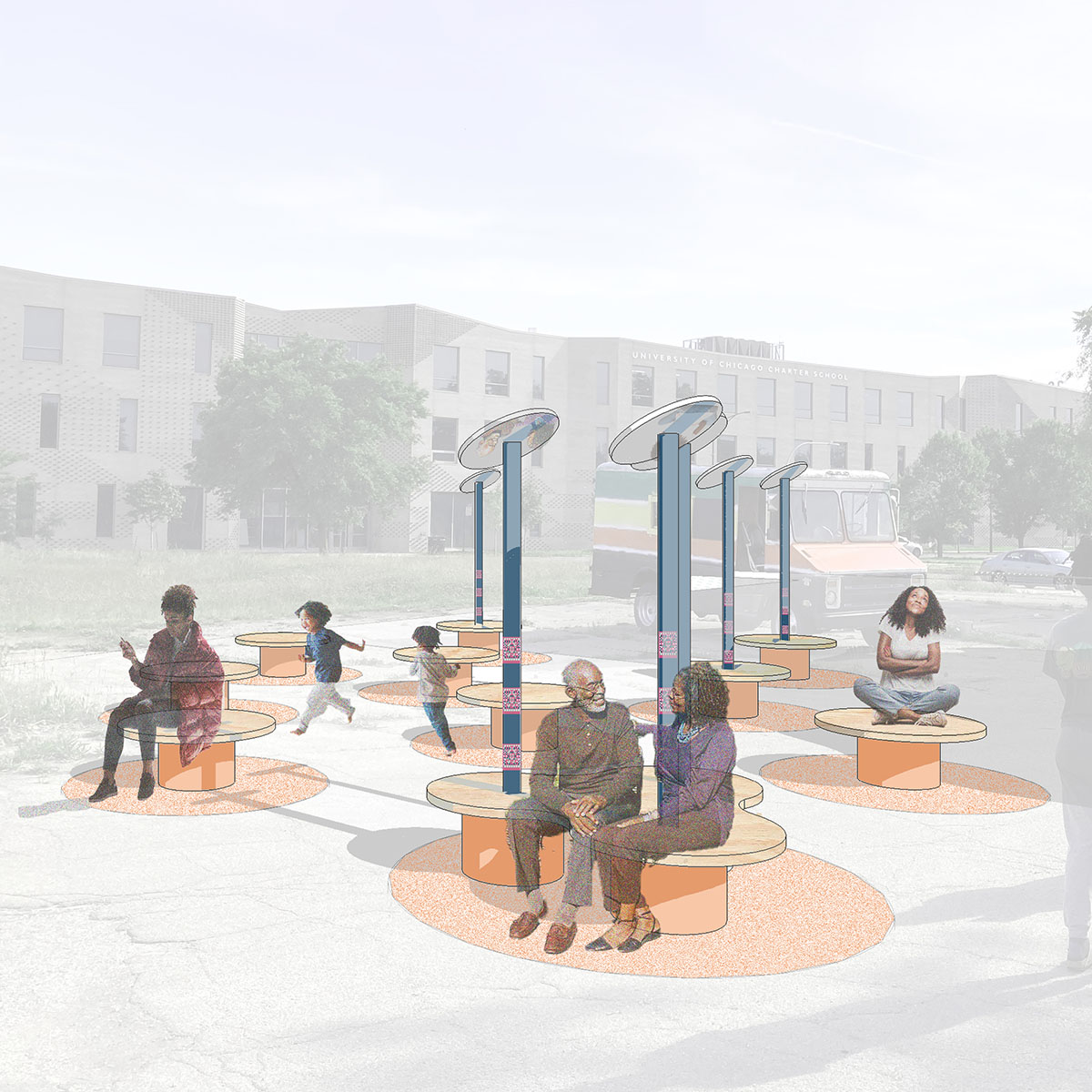
Proposal by Matri-Archi(tecture). Image courtesy of Matri-Archi(tecture)
"Exploring the potential of The Available City has been a central focus for me for over a decade, and it is a fantastic opportunity to explore its ideas with global and local architects, designers, thinkers, and community leaders within the Biennial’s platform," said Artistic Director David Brown.
"When the Biennial opens, our work is really just beginning -- the Biennial is an open conversation on possibility, and I am excited to see what ideas, collaborations, and partnerships emerge from this forum."
"The Available City will bring a new approach to the biennial model"
This year's Biennial will bring a new approach to the biennial model, bridging from an exhibition format to a deeper engagement with the local community and expanding the Biennial’s potential to spur on experimentation and engagement.
While The Available City will explore specific ideas that highlight the potential of collective spaces—in response to the 10,000-plus city-owned vacant lots that are concentrated on the South and West Sides of Chicago in predominantly Black and Brown neighborhoods, the Biennial will focus on possible sites for community-driven design and engagement.
The Available City is the latest and most expansive iteration of an eponymous long-term project developed by Artistic Director David Brown.
Inspired by the potential of vacant lots in American cities, Brown has engaged in an ongoing initiative to document, explore, and reimagine these spaces for over a decade. The 2021 Biennial continues this work, forming a dynamic and multifaceted exploration of an urban design proposal for what can become of unused space and vacant lots in the urban context through a process of community-driven design.
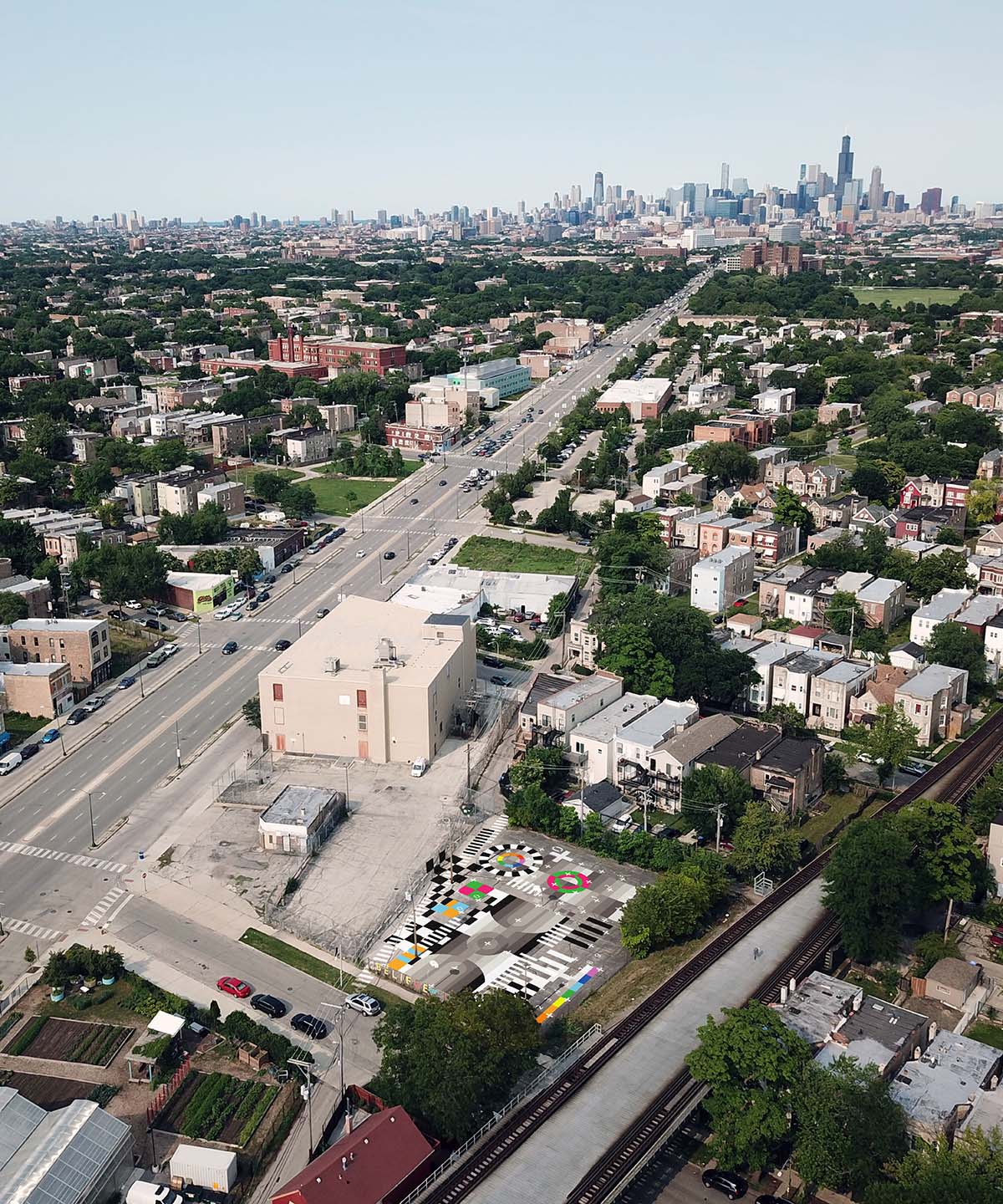
Outpost Office, Bell Park, WACA Site, Cover the Grid. Image courtesy of Outpost Office
More than 80 contributors from around the world
The projects in The Available City will bring ideas for collective spaces to life through built projects, exhibitions, essays, workshops, and programs that activate neighborhood sites in ways that will engage and enhance the community experience. These explorations include:
Site-specific architectural projects: 15 of the Biennial’s commissioned projects are installations on public and private lots located in Chicago’s neighborhoods of North Lawndale, Bronzeville, Woodlawn, Englewood, Pilsen, and the South Loop. For many of these projects, Artistic Director David Brown engaged mission-driven community organizations or groups across the city, pairing them with an architect whose practice he believed was aligned with the organization’s intentions for a space, expanding upon the work these organizations were already doing to engage their community. Examples of site-specific projects include:
- Two projects on the Westside Association for Community Action (WACA) Playlot, Bell Park, were the outcome of a community workshop facilitated by Open Architecture Chicago and Freedom House with David Brown to envision the transformation of a vacant 15-block stretch under the Chicago Transit Authority Pink Line train. One of the projects in Bell Park comprises a central architectural installation designed to mimic the look and feel of the blow-up bounce houses that are staples of block parties around the country by Studio Barnes (Miami, FL), in collaboration with Shawhin Roudbari (Boulder, CO) and MAS Context (Chicago, IL); the other is an architectural-scale urban painting by Outpost Office (Columbus, OH) on the ground of the lot, which is produced with GPS-guided robots ordinarily used to paint temporary sports fields.
- On 63rd between University and Woodlawn in the Woodlawn neighborhood of Chicago, Matri-Archi(tecture) will present Reflecting Our (Global) South Side, which creates a circular outdoor meeting space with canopies and seating to provides shade and shelter for congregation, referencing the rich value of radial community planning, historically designed by communities in Sub-Saharan Africa.
- At the former Overton Elementary School in Bronzeville, which is the site of the Overton Incubator for entrepreneurship in business, technology and design, The Open Workshop (San Francisco, CA and Toronto, Canada) will present The Center Won’t Hold, an outdoor meeting space for the community defined by a series of movable curtains that can easily transform the space. The project will serve various different purposes and accommodate various styles of gatherings, signifying the evolving practices and values of commoning.
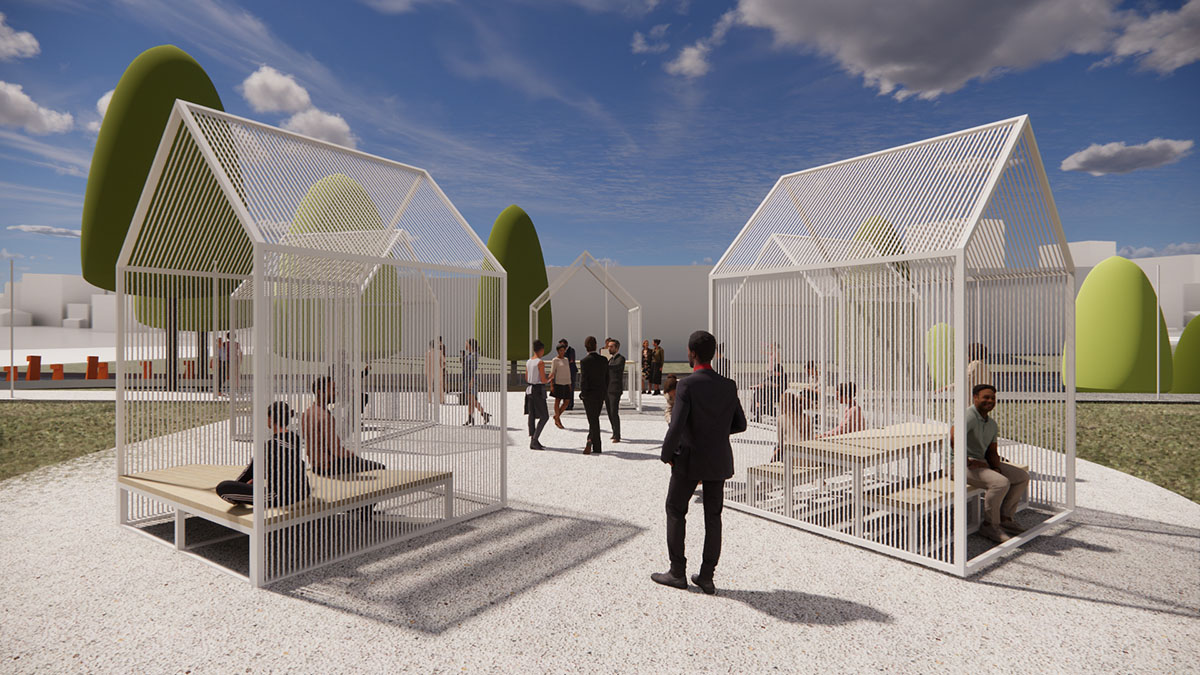
Courtesy of PORT, Rendering of Southbank Park Installation, 2021
Exhibition-based explorations: The 2021 edition of The Available City is accompanied by two exhibitions, one located in an unused storefront space at the Bronzeville Artist Lofts, and the other at the Graham Foundation. The works at both venues amplify ideas and concepts of The Available City.
The Graham Foundation exhibition includes projects by Christophe Hutin Architecture (Bordeaux, France), Drawing Architecture Studio (Beijing, China), Departamento del Distrito (Mexico City, Mexico), El Cielo (Mexico City, Mexico), Enlace Arquitectura + Ciudad Laboratorio (Caracas, Venezuela), fala (Porto, Portugal), and RIFF Studio (New York, NY). Work by Plan Comun (Paris, France), RIFF Studio (New York, NY, SHAU (Bandung, Indonesia), and Urban American City (New York, NY) is exhibited at the Bronzeville Artist Lofts.
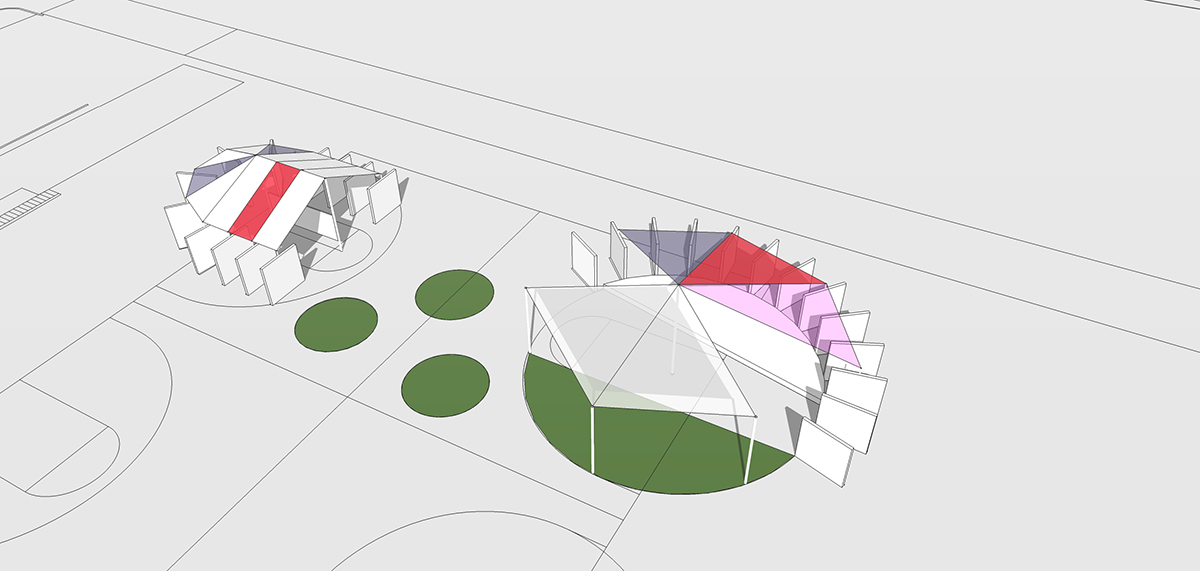
Project H.O.O.D. ProjectHOOD site, Courtesy of ProjectH.O.O.D
Essays, programs, and workshops: The Biennial also commissioned essays, programs, and workshops that enact The Available City’s improvisational framework, building a pathway for an ongoing, community-driven urban design that directly engages neighborhoods and communities. Essay contributors include Jill Desimini (Cambridge, MA, Harvard University), Elleza Kelley (New Haven, CT, Yale University), Stefan Gruber (Pittsburgh, PA, Carnegie Mellon University), Rayna Razmilic (Santiago, Chile), Alexander Eisenschmidt (Chicago, IL, UIC), StudioAPT (Ann Arbor, MI, University of Michigan), and Ana Miljački (Boston, MA, MIT), among others
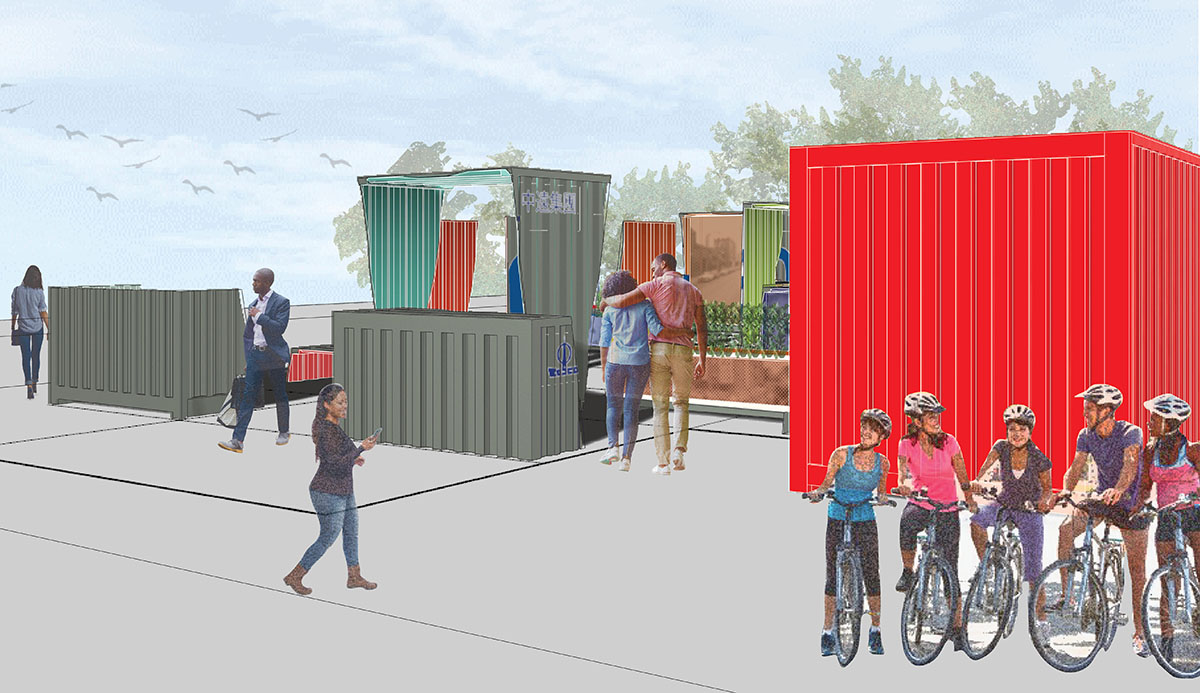
sekou cooke STUDIO YMEN North Lawndale Bike Box. Image courtesy of sekou cooke STUDIO
Programs and activation weekends throughout the course of the Biennial
Programming is a central piece of each edition of the Biennial and continues to be an essential cornerstone of this year’s program. This edition, site-specific installations will be programmed across dedicated Activation Weekends between September 17 and October 31.
Each Activation Weekend features a different group of neighborhoods to highlight the Biennial's installation sites to present programs including conversations, performances, and workshops.
Programs are developed in partnership and in collaboration with community organizations including neighborhood organizations, schools, local residents, and the global architects who are contributors to the Biennial. Highlights include a series presented by Xfinity featuring a performance by Norman W. Long at the Chicago Cultural Center, a program in partnership with Grow Greater Englewood called TYrone Talks, and a film screening at Overton Elementary School in partnership with the Chicago International Film Festival. After October 31, 2021, programs will continue through the end of the year across virtual platforms and in-person in accordance with COVID/Health guidelines.

Soil Lab Design Rendering. Image by Eibhlín Ní Chathasaigh, James Albert Martin, Maria Bruun and Anne Dorthe Vester
Biennial’s virtual program will present InDialogue series
Additionally, the Biennial’s virtual program series, InDialogue, presents a new conversation every Tuesday, bringing together cultural leadership from around the world to highlight a diverse perspective and further engagement with topics related to The Available City. This year, CAB is partnering with organizations including the Association of Architecture Organizations, Chicago Architecture Center, Southern California Institute of Architecture (SCI-Arc), Exhibit Columbus, the Graham Foundation, and the Art Institute of Chicago to name a few.
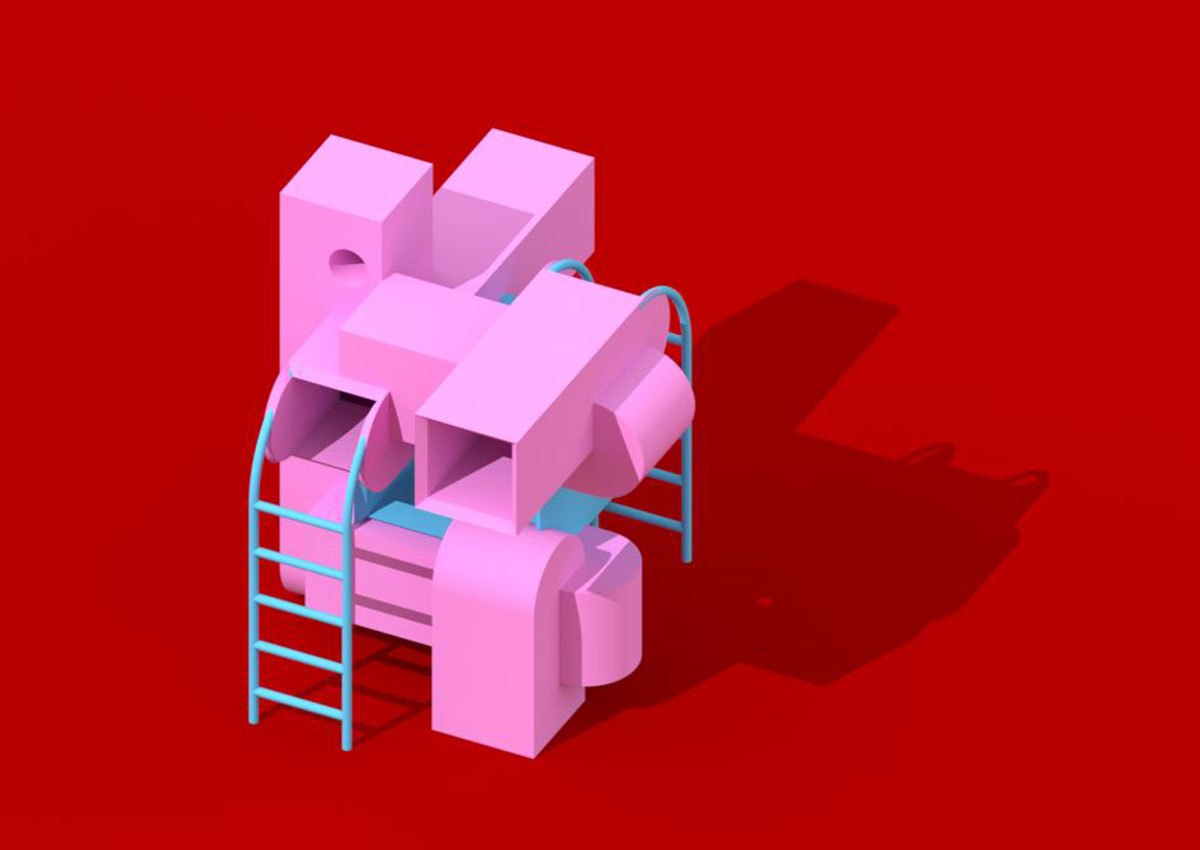
STUDIO BARNES, Bell Park, WACA Site, Block Party. Image courtesy of STUDIO BARNES
For details on the InDialogue series and individual activation weekends please visit the CAB’s website and program calendar that will be consistently updated here.
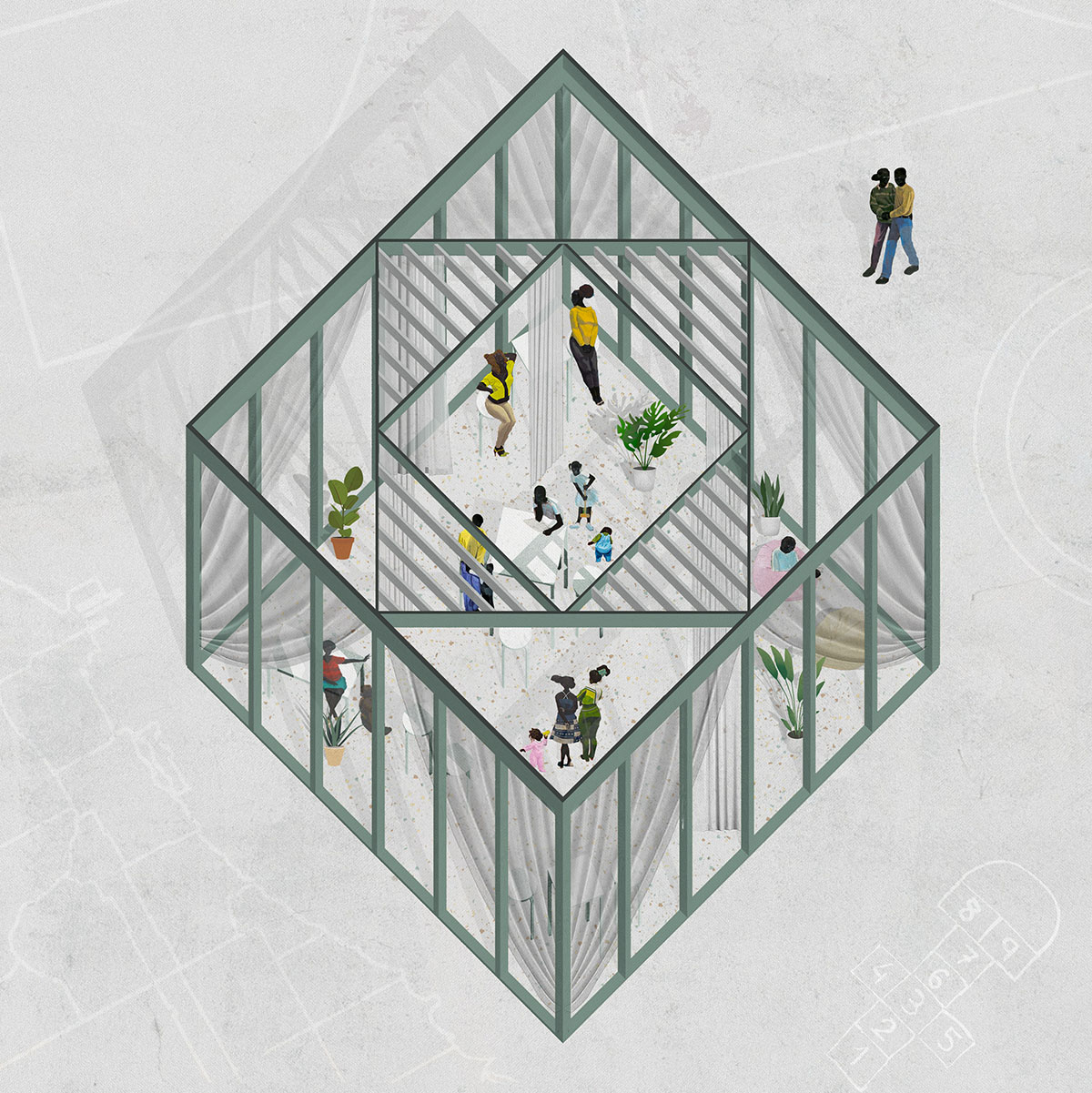
The Open Workshop, Overton Elementary, The Center Won't Hold. Image courtesy of The Open Workshop
This year the Biennial is taking it outdoors to present an experience that is free and open to all by extending into over 8 neighborhoods around the city; the former hub, Chicago Cultural Center, will serve as an orientation and information venue.
Scroll down to see the 2021 Contributors (Listed alphabetically by last name):
Paola Aguirre, Borderless Studio (Chicago, USA)
Ebere Agwuncha, Project HOOD (Chicago, USA)
James Albert Martin, Soil Lab (Dublin, Ireland)
Dio Aldridge, Central Park Restoration Committee (Chicago, USA)
Gabriela Alvarez, Enlace Arquitectura + Ciudad Laboratorio (Caracas, Venezuela)
Carol Arellano, Enlace Arquitectura + Ciudad Laboratorio (Caracas, Venezuela)
Rekha Auguste-Nelson, RIFF Studio (New York, USA)
Germane Barnes, Studio Barnes with Shawhin Roudbari and MAS Context (Miami, USA)
Ahmed Belkhodja, fala (Porto, Portugal)
Giovanni Bellotti, Studio Ossidiana (Rotterdam, The Netherlands)
Neeraj Bhatia, The Open Workshop (Toronto, Canada and San Francisco, USA)
Ashley Bigham, Outpost Office (Columbus, USA)
Maite Borjabad (Chicago, USA)
Andre Brumfield, Gensler (Chicago, USA)
Maria Bruun, Soil Lab (Copenhagen, Denmark)
Cheo Carvajal, Enlace Arquitectura + Ciudad Laboratorio (Caracas, Venezuela)
Jane Charney, Central Park Restoration Committee (Chicago , USA)
Max Chavez, Central Park Restoration Committee (Chicago, USA)
Sekou Cooke, sekou cooke STUDIO (Charlotte, USA)
Alessandra Covini, Studio Ossidiana (Rotterdam, The Netherlands)
Haman Cross, Freedom House (Chicago, USA)
Felipe De Ferrari, Plan ComúnPlan (Paris, France)
Valeria De Jongh, Enlace Arquitectura + Ciudad Laboratorio (Caracas, Venezuela)
Khensani de Klerk, Matri-Archi(tecture) (Cambridge, UK)
Jill Desimini (Cambridge, USA)
Alexander Eisenschmidt (Chicago, USA)
Nathan Friedman, Departamento del Distrito (Mexico City, Mexico)
Iker Gil,Studio Barnes with Shawhin Roudbari and MAS Context (Chicago, USA)
Toni Griffin, Urban American City (New York, USA)
Stefan Gruber (Pittsburgh, USA)
Li Han, Drawing Architecture Studio (Beijing, China)
Armando Hashimoto, El Cielo (Mexico City, Mexico)
Florian Heinzelmann, SHAU (Bandung, Indonesia)
Andres Hernandez, Englewood Nature Trail (Chicago, USA)
Erik Herrmann, Outpost Office (Columbus, USA)
Manuel Herz, Manuel Herz Architects (Basel, Switzerland)
Walter Hood, Hood Design Studio (Oakland, USA)
Eric Hotchkiss, Englewood Nature Trail (Chicago, USA)
Christophe Hutin, Christophe Hutin Architecture (Bordeaux, France)
Bweza Itaagi, Englewood Nature Trail (Chicago, USA)
Momoyo Kaijima, Atelier Bow-Wow (Tokyo, Japan)
Mariam Kamara, atelier masomi (Niamey, Niger)
Elleza Kelley (New Haven and New York, USA)
Cesar Lopez, The Open Workshop (Toronto, CA and San Francisco, USA)
Michael Loverich, The Bittertang Farm (Bainbridge Island, USA)
Ann Lui, Central Park Restoration Committee (Chicago, USA)
Filipe Magalhães, fala (Porto, Portugal)
Tshego Mako, Matri-Archi(tecture) (Cape Town, South Africa)
Tapiwa Manase, Matri-Archi(tecture) (Cape Town, South Africa)
Christopher Marcinkoski, PORT (Chicago, USA)
Pastor Robert Marshall, Central Park Restoration Committee (Chicago, USA)
Tashona Marshall, Central Park Restoration Committee (Chicago, USA)
Solange Mbanefo, Matri-Archi(tecture) (Cape Town, South Africa)
John McMorrough, studioAPT (Ann Arbor, USA)
Julia McMorrough, studioAPT (Ann Arbor, USA)
Zena Mengesha, RIFF Studio (New York, USA)
Dennis Milam, Borderless Studio (Chicago, USA)
Ana Miljački, (Boston, USA)
Maria Virginia Millán, Enlace Arquitectura + Ciudad Laboratorio (Caracas, Venezuela)
Negin Moayer, ProjectH.O.O.D (Chicago, USA)
Andrew Moddrell, PORT (Chicago, USA)
Jaeson Montilla, Enlace Arquitectura + Ciudad Laboratorio (Caracas, Venezuela)
Eibhlín Ní Chathasaigh, Soil Lab (Dublin, Ireland)
Alexander Pérez, Enlace Arquitectura + Ciudad Laboratorio (Caracas, Venezuela)
Francisco Quiñones, Departamento del Distrito (Mexico City, Mexico)
Farnoosh Rafaie, RIFF Studio (New York, USA)
Rayna Razmilic (Santiago, Chile)
Shawhin Roudbari, Studio Barnes with Shawhin Roudbari and MAS Context (Denver, USA)
Anton Seals, Englewood Nature Trail (Chicago, USA)
Surella Segu, El Cielo (Mexico City, Mexico)
Mary Lu Seidel, Central Park Restoration Committee (Chicago, USA)
Roger Sherman, Gensler (Los Angeles, USA)
Elisa Silva, Enlace Arquitectura + Ciudad Laboratorio (Caracas, Venezuela)
Craig Stevenson, Open Architecture Chicago (Chicago, USA)
Isabel Strauss, RIFF Studio (New York, USA)
Blanche Suggs-Killingsworth, Central Park Restoration Committee (Chicago, USA)
Daliana Suryawinata, SHAU (Bandung, Indonesia)
Norman Teague, ProjectH.O.O.D (Chicago, USA)
Antonio Torres, The Bittertang Farm (Chicago, USA)
Yoshiharu Tsukamoto, Atelier Bow-Wow (Tokyo, Japan)
Sumayya Vally, Counterspace (Johannesburg, South Africa)
Anne Dorthe Vester, Soil Lab (Copenhagen, Denmark)
Craig Wilkins (Detroit, United States & Ann Arbor, USA)
Michelle Wilkinson (Washington, D.C., USA)
Hu Yan, Drawing Architecture Studio (Beijing, China)
Emily Yanez, Enlace Arquitectura + Ciudad Laboratorio (Caracas, Venezuela)
Gerardo Zavarce, Enlace Arquitectura + Ciudad Laboratorio (Caracas, Venezuela)
Chicago Architecture Biennial facts:
Official Title: Chicago Architecture Biennial
Exhibition Title: The Available City
Press and Professional Kick-off: September 17–18, 2021
Public Dates: September 17, 2021 - December 18, 2021
Top image: The Bittertang Farm_PermaPark at CCA Academy, Living Room. Image courtesy of The Bittertang Farm
